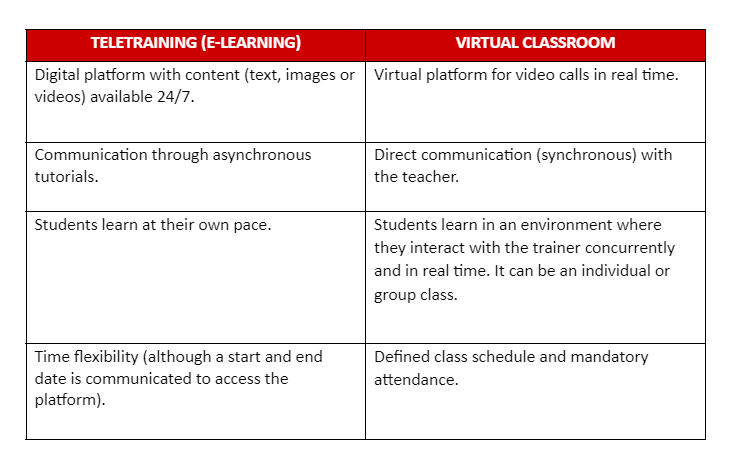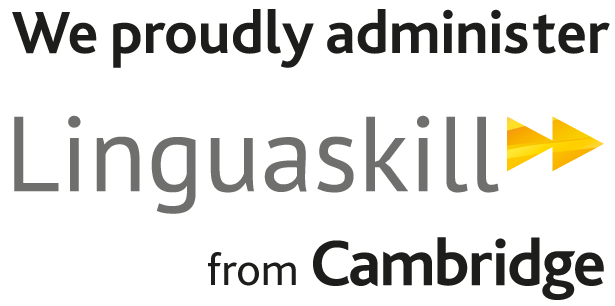Did you know that only 25% of Spanish companies use the credit from the FUNDAE Social Security kick-back bonuses to cover training costs? This data is confirmed by FUNDAE’s 2022 balance sheet.
And all companies that pay for vocational training have an annual credit for the training of their team. But as you can see, there are still organizations that do not know about the possibility of covering part (or all) of the training costs thanks to the course discounts from FUNDAE (formerly the Fundación Tripartita).
Were you aware of using FUNDAE’s social security credit subsidies for language classes? Would you like to use this option, but don’t know where to start?
The first step is to find a good language-training provider and then follow the steps that you will find below in the section “How to subsidize training with FUNDAE”, and voilà! You will be on your way to developing your team’s foreign-language skills
What are subsidized courses for companies?
All companies in Spain have an annual credit for the on-going training of their employees, which can be made effective through “bonuses” based on the previous year’s Social Security contributions.
The training that you can finance with this credit is what is known as subsidized courses, which offer you benefits such as improving the productivity, competitiveness, and employability of your staff.
Here are two relevant details about the FUNDAE course bonus:
- Subsidized training can be in-person, virtual or online (e-learning) and must be related to the needs of the company and the professional development of workers.
- To access these funds, your organization must be up to date with payments to the Tax Agency and Social Security.
What is FUNDAE?
The State Foundation for Employment Training, known as FUNDAE, is an entity that operates in the Spanish state that was created to promote and finance vocational training in the workplace.
Its main functions include managing funds for on-going training, promoting and financing vocational training programs, collaborating with companies to develop training plans, and supervising the quality of the training provided.
Therefore, if you are responsible for a training or human resources department, FUNDAE can become your best ally because it will allow you to offer language, or other skills, training without having to spend a fortune.
How to subsidize training with FUNDAE
Perhaps in the company where you work you already have an agency or an internal department that is responsible for managing these procedures. If not, you can always ask the provider or training centre which offers the course you are interested in.
There are also companies and specialist professionals with a lot of experience that can help you with these issues. In the case of Ziggurat Corporate Language School, we work with Fanny Porta from SYF Consultores, who has been managing the subsidies for most of our clients for 15 years.
Below you will find a brief summary of the procedures to process the course subsidies for companies:
- Identify the training needs of your organization: Evaluate the training needs of your team. Do they need to improve specific skills? Or maybe learn a new language? Identifying these needs well will help you choose the right courses.
- Check the credit available to your company for training.
- Register your company on the FUNDAE website: You only have to provide basic information about your company to create an account.
- Select a training centre and ask if its training meets FUNDAE requirements. Make sure the course you’re interested in fits your company’s needs and talk to them about your interest in subsidizing the course. Training providers are usually experienced in this process and can guide you through the administrative details.
- Report the course or courses to the RLT (Legal Representation of Workers), if applicable.
- Communicate the course to FUNDAE up to two days before the start.
- Carry out the training with the interested people on your team.
- Communicate the completion of the training, as well as the list of participants and the cost of the training on the FUNDAE website.
- Application of the Social Security bonus. This can be done internally or with the agency that processes your bonuses.
- Calculate the costs of the subsidized training and the subsidies that can be requested, which should correspond to the costs in point 8.
Remember that on the FUNDAE website there are more details that are always updated.
What training modalities can be subsidized through FUNDAE?
As briefly mentioned in the section “What are subsidized courses for companies”, you will now find a list of language training modalities that can be subsidized, and which can be applied to any type of training:
- In-person language training (or in-person language classes). Students and teachers are in the same space and communicate directly. The maximum number of participants is 30 people.
- Language training in a virtual classroom (or virtual language classes). In this case, classes are taught through a digital platform. For example, platforms such as Zoom or Teams. In this modality, students and teachers are not in the same space, but classes are taught synchronously and concurrently (there may be people in different locations who connect at the same time). The maximum number of participants is 30 people.
- Bimodal training (a combination of virtual and in-person classes). This modality is considered in-person. And this is explained in the BOE-A-2022-24394 law where it reads: “so that a part of the participants can be in a physical classroom and simultaneously others can connect through a virtual classroom.” It is also bimodal if some sessions are virtual and others are in-person.
- Teletraining (online training-e-learning). This is e-learning training through a digital learning platform. The interaction with the tutor is asynchronous. The aforementioned platform must meet the requirements of FUNDAE and in order to receive a training bonus, it is essential that students complete a minimum of 75% of the evaluation tests.
- Mixed language training (combination of e-learning and face-to-face or virtual classes). Part of the schedule is in-person, and another is tele-learning (e-learning). If the face-to-face/virtual part is less than 20% in duration, it is considered tele-training.
Differences between teletraining (e-learning training) and virtual training
Sometimes virtual, online and e-learning are used interchangeably, as if they were synonyms; and that creates some confusion about the modality we are talking about.
In the following table you will find the differences:
In short, the main difference lies in time and interactivity. E-learning courses allow students to learn at their own pace and do not require real-time interaction with teachers, while virtual classes involve real-time interaction and follow a specific schedule. Both approaches have their advantages and disadvantages, and the choice between an e-Learning course and virtual classes will depend on the preferences of the student and the type of learning experience they are looking for.
How to make subsidized language training a success
Based on Ziggurat’s experience during our 20 academic years of history, we want to leave you with the following three recommendations:
- Provider: choose the provider well, as well as the training course, which must adapt to the needs and profiles of the participants. If attendance is high, training will be synonymous with investment; but if it is low, it will only be an expense (no matter how “cheap” it may be in cost).
- Attendance: Remind participants that attendance must be a minimum of 75%.
- Filter the people who will do the training: Selecting training participants involves requesting a significant commitment from those who will follow the courses.
Ziggurat’s recommendations on course subsidies
If you assure you have qualified teachers and personalized content, you will guarantee that the training adds value and that there is greater commitment on the part of the people who will follow the courses. By doing this you will create good attendance which will allow your teams to develop, and at the same time your company will benefit from the FUNDAE course subsidies.
To finish, we want to remind you that:
-
- The FUNDAE subsidised training must be related to the business activity of your company.
- Training courses can be subsidised starting at a total of 2 hours.
- No more than 8 hours of training per day may be considered, except courses that take place over a single day.
- The maximum number of participants is 30 in the in-person and virtual modality and up to 80 people in teletraining (e-learning).
- The minimum attendance per participant must be 75%.
- The company must guarantee free training for participants.
If you have doubts or questions about subsidized language training, do not hesitate to contact Ziggurat.





